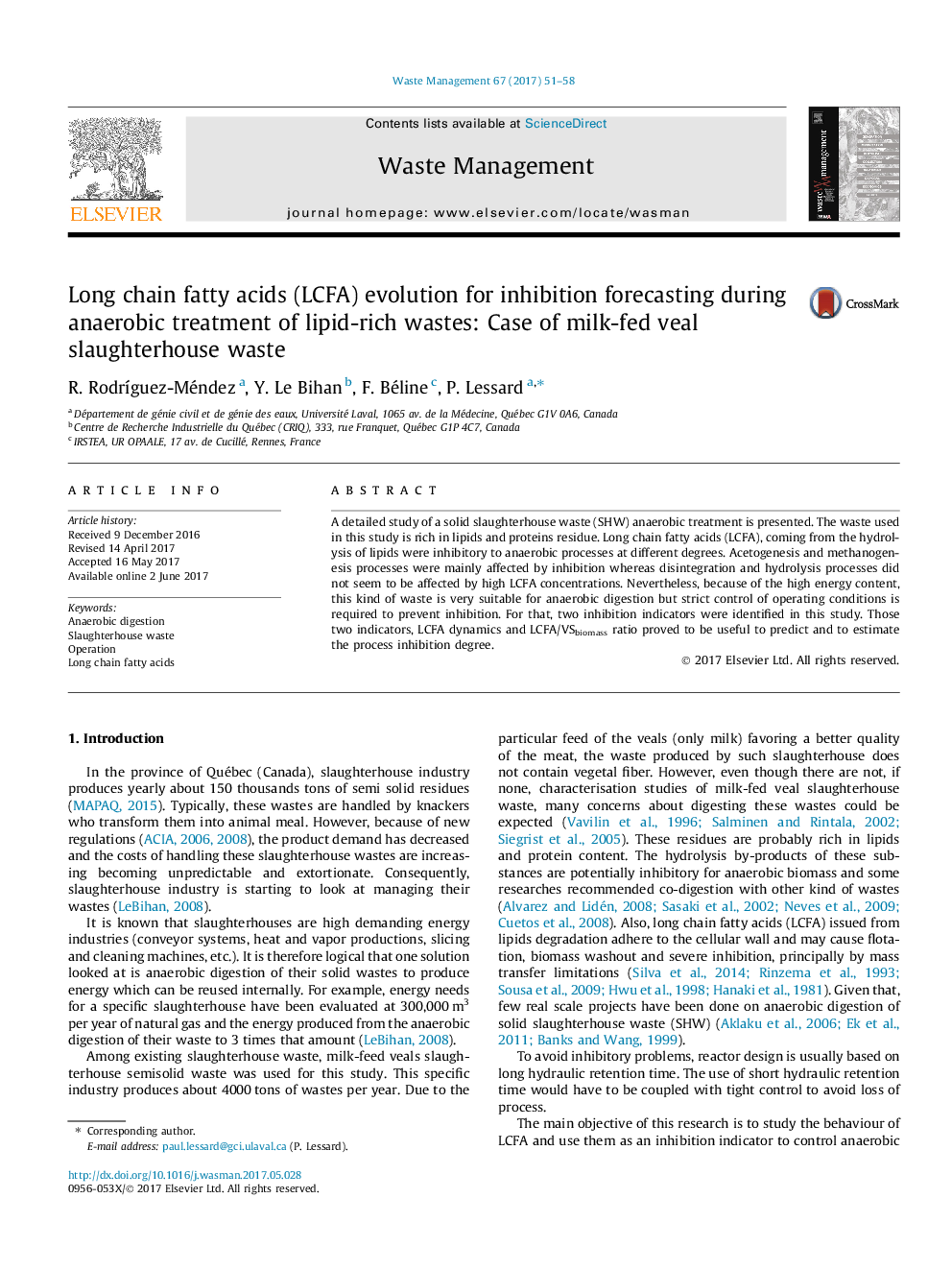| کد مقاله | کد نشریه | سال انتشار | مقاله انگلیسی | نسخه تمام متن |
|---|---|---|---|---|
| 5756640 | 1622619 | 2017 | 8 صفحه PDF | دانلود رایگان |

- Milk feed veal slaughterhouse waste is characterized.
- Anaerobic treatment is tested at different hydraulic retention times and organic loading rates.
- The LCFA/VSbiomass ratio can be used as an inhibition degree indicator.
- The dynamic change in LCFA composition can also be used for predicting inhibition.
A detailed study of a solid slaughterhouse waste (SHW) anaerobic treatment is presented. The waste used in this study is rich in lipids and proteins residue. Long chain fatty acids (LCFA), coming from the hydrolysis of lipids were inhibitory to anaerobic processes at different degrees. Acetogenesis and methanogenesis processes were mainly affected by inhibition whereas disintegration and hydrolysis processes did not seem to be affected by high LCFA concentrations. Nevertheless, because of the high energy content, this kind of waste is very suitable for anaerobic digestion but strict control of operating conditions is required to prevent inhibition. For that, two inhibition indicators were identified in this study. Those two indicators, LCFA dynamics and LCFA/VSbiomass ratio proved to be useful to predict and to estimate the process inhibition degree.
Journal: Waste Management - Volume 67, September 2017, Pages 51-58